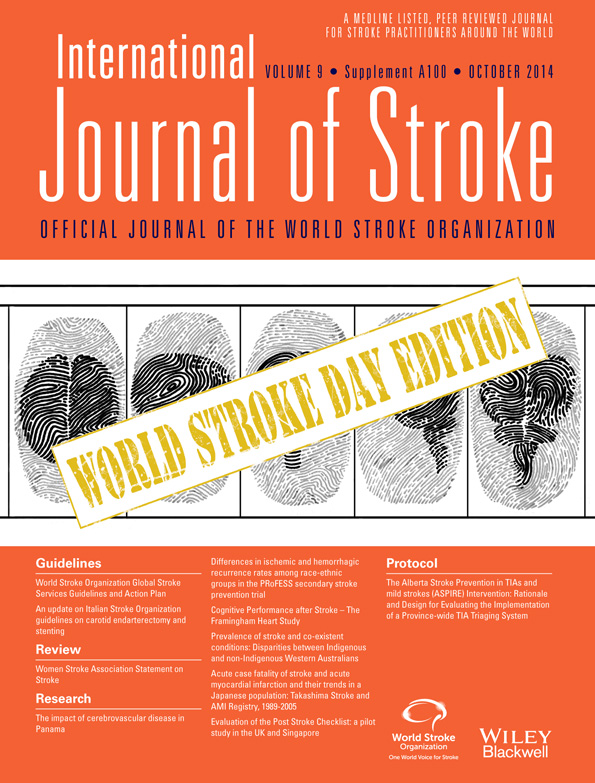World Stroke Organization Global Stroke Services Guidelines and Action Plan
Abstract
Every two seconds, someone across the globe suffers a symptomatic stroke. ‘Silent’ cerebrovascular disease insidiously contributes to worldwide disability by causing cognitive impairment in the elderly. The risk of cerebrovascular disease is disproportionately higher in low to middle income countries where there may be barriers to stroke care. The last two decades have seen a major transformation in the stroke field with the emergence of evidence-based approaches to stroke prevention, acute stroke management, and stroke recovery. The current challenge lies in implementing these interventions, particularly in regions with high incidences of stroke and limited healthcare resources. The Global Stroke Services Action Plan was conceived as a tool to identifying key elements in stroke care across a continuum of health models.
At the minimal level of resource availability, stroke care delivery is based at a local clinic staffed predominantly by non-physicians. In this environment, laboratory tests and diagnostic studies are scarce, and much of the emphasis is placed on bedside clinical skills, teaching, and prevention. The essential services level offers access to a CT scan, physicians, and the potential for acute thrombolytic therapy, however stroke expertise may still be difficult to access. At the advanced stroke services level, multidisciplinary stroke expertise, multimodal imaging, and comprehensive therapies are available. A national plan for stroke care should incorporate local and regional strengths and build upon them.
This clinical practice guideline is a synopsis of the core recommendations and quality indicators adapted from ten high quality multinational stroke guidelines. It can be used to establish the current level of stroke services, target goals for expanding stroke resources, and ensuring that all stages of stroke care are being adequately addressed, even at the advanced stroke services level. This document is a start, but there is more to be done, particularly in the realm of primary prevention.
Despite differences in resource availability, the message we wish to convey is that stroke awareness, education, prevention, and treatment should always be feasible. Communities and institutions should set goals to continuously expand their stroke service capabilities. This document is intended to augment stroke advocacy efforts throughout the world, providing a strategic plan for optimizing stroke outcomes.




